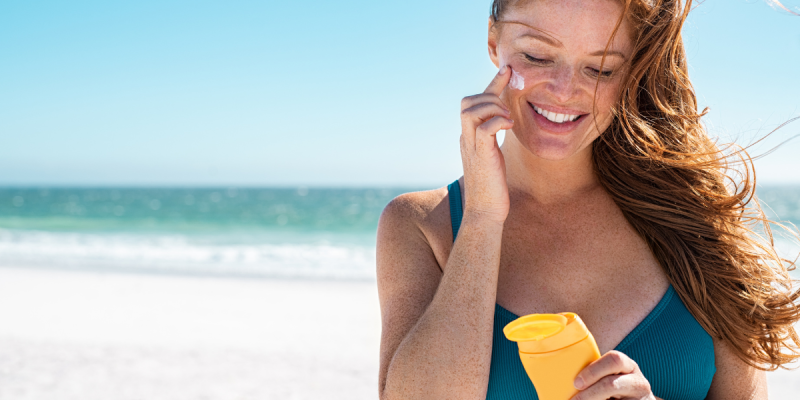When it comes to sun protection, we all know the golden rule: wear SPF daily. But choosing the right sunscreen can feel overwhelming—especially when you're faced with the choice between chemical and mineral formulas. So, what’s the real difference, how does SPF actually work, and how do you choose the best one for your skin type? Let’s break it down.
First Things First: How Does SPF Work?
SPF stands for Sun Protection Factor. It’s a measure of how well a sunscreen protects against UVB rays, the ones responsible for sunburn. The number (like SPF 30 or 50) indicates how much longer you can stay in the sun without burning than you could with bare skin.
However, not all sunscreens protect equally. That’s why it’s important to choose a broad-spectrum formula, which shields you from both UVA (aging) and UVB (burning) rays.
Chemical Sunscreens
How They Work
Chemical SPF absorbs into the skin and then absorbs UV rays, converting them into heat and releasing them from the body.
Common Active Ingredients:
- Avobenzone
- Octinoxate
- Octocrylene
- Oxybenzone
Benefits:
- Tends to be lightweight and sheer
- Spreads easily without a white cast
- Often better for everyday wear under makeup
Things to Consider:
- Can cause irritation for sensitive or acne-prone skin
- Some ingredients may sting eyes
- May not be reef-safe (check the label if you're ocean-bound!)
Mineral (or Physical) Sunscreens
How They Work:
Mineral SPF sits on top of the skin and physically blocks and reflects UV rays.
Common Active Ingredients:
- Zinc Oxide
- Titanium Dioxide
Benefits:
- Gentle and less likely to cause irritation
- Starts working immediately—no need to wait before sun exposure
- Generally considered reef-safe and pregnancy-safe
Things to Consider:
- Can leave a white cast (especially on deeper skin tones, though newer formulations or tinted varieties have improved this)
- Thicker texture may feel heavier on the skin
How to Choose the Right SPF for Your Skin
Choosing between chemical and mineral sunscreen comes down to your skin’s needs, lifestyle, and preferences. Here are some tips to help you decide:
- If you have sensitive skin or rosacea, go for mineral. Zinc oxide is anti-inflammatory and can be calming.
- Wearing Under Makeup? Try a chemical formula with a lightweight or serum texture that layers well. For extra coverage, layer on a primer or foundation with active SPF ingredients, like the Bare Minerals PRIME TIME Daily Protecting Primer Mineral SPF 30.
- If you’re spending the day outdoors or swimming, Look for water-resistant, broad-spectrum SPF (available in both types) and reapply every 2 hours.
- If you have a deep Skin Tone, seek tinted mineral sunscreens or chemical formulas that blend seamlessly.
- Want a clean or reef-safe option? Check the label for reef-friendly mineral ingredients like non-nano zinc oxide.
No matter which type you choose, the most important part is consistent use. Whether you prefer a mineral formula for its gentle touch or a chemical sunscreen for its smooth feel under makeup, daily SPF is your skin’s best defense against premature aging, sun damage, and skin cancer.







